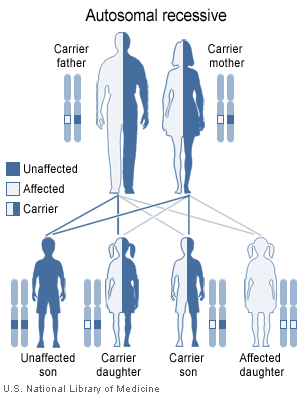Jervell and Lange-Nielsen syndrome
| Jervell and Lange-Nielsen syndrome | |
| ICD-9 | 426.82 |
|---|---|
| OMIM | 220400 |
| DiseasesDB | 7249 |
| MeSH | D029593 |
Editor-In-Chief: C. Michael Gibson, M.S., M.D. [1]; Associate Editor(s)-in-Chief:
Synonyms and keywords:Autosomal recessive long QT syndrome (LQTS), cardioauditory syndrome, cardioauditory syndrome of Jervell and Lange-Nielsen, deafness, congenital, and functional heart disease, Jervell and Lange-Nielsen (JLNS), surdocardiac syndrome
Overview
Jervell and Lange-Nielsen syndrome is a rare autosomal recessive condition that leads to sensorineural deafness, long QT syndrome (LQTS) and other cardiac events. Jervell and Lange-Nielsen syndrome is due to KCNQ1 or KCNE1 gene mutations. The range of symptoms and severity of symptoms in Jervell and Lange-Nielsen syndrome differs from patient to patient.
Historical Perspective
- Jervell and Lange-Nielsen syndrome (JLNS) was first discovered by Anton Jervell and Fred Lange-Nielsen, in 1957.
Classification
Pathophysiology
Causes
Differentiating Xyz from other Diseases
Epidemiology and Demographics
Risk Factors
Screening
Natural History, Complications and Prognosis
Diagnosis
Treatment
Jervell and Lange-Nielsen syndrome is a condition that causes profound hearing loss and arrhythmia, it is a type of long QT syndrome. This condition is inherited in an autosomal recessive pattern, and affects an estimated 1.6 to 6 in 1 million children, and is responsible for less than 10 percent of all cases of long QT syndrome.
Like long QT syndrome, Jervell and Lange-Nielsen syndrome is a heart condition that causes the cardiac muscle to take longer than usual to recharge between beats. If untreated, the irregular heartbeats can lead to fainting, seizures, or sudden death.
Mutations in the KCNE1 and KCNQ1 genes cause Jervell and Lange-Nielsen syndrome. The proteins produced by these two genes work together to form a channel that transports positively charged potassium ions out of cells. The movement of potassium ions through these channels is critical for maintaining the normal functions of the inner ear and cardiac muscle.
About 90 percent of cases of Jervell and Lange-Nielsen syndrome are caused by mutations in the KCNQ1 gene; KCNE1 mutations are responsible for the remaining 10 percent of cases. Mutations in these genes alter the usual structure and function of potassium channels or prevent the assembly of normal channels. These changes disrupt the flow of potassium ions in the inner ear and in cardiac muscle, leading to the hearing loss and irregular heart rhythm characteristic of Jervell and Lange-Nielsen syndrome.

This article incorporates public domain text from The U.S. National Library of Medicine